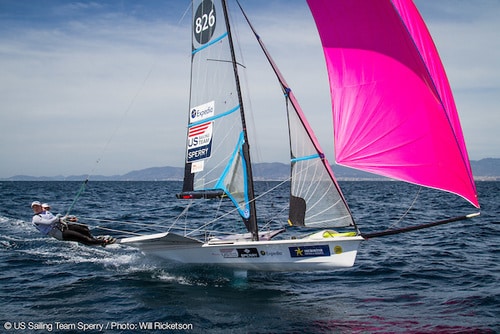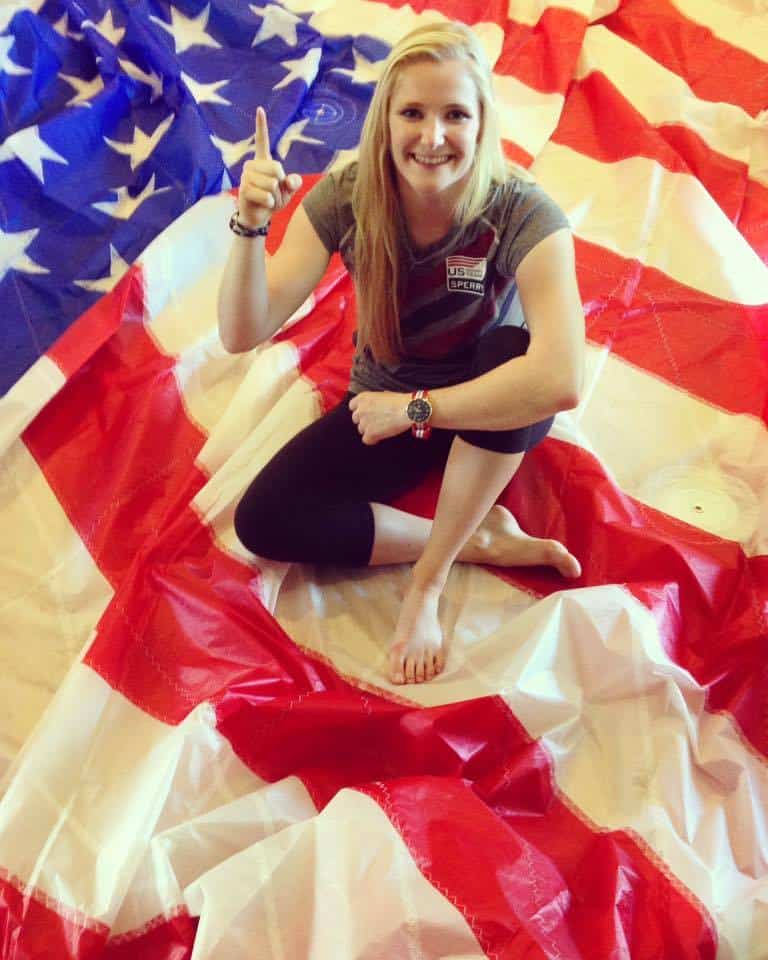
The best sailors harp on the value of knowing a venue before racing. At the Olympics, there’s an advantage for the host country’s sailors, but through the quad leading up to the games in Rio, many teams have been taking advantage of their training time on Guanabara Bay to understand an exceptionally tricky venue. The US Sailing Team Sperry, in particular, has arranged for training camps in the handful of spring and summer months leading up to the games to give their sailors ample time to stretch their legs on the Olympic waters.
For 49er FX sailors Paris Henken and Helena Scutt, currents and wind patterns have been nearly the focus of these training camps. Stationed at US Sailing Team Sperry HQ, the American skiff team spends its mornings on land doing boat work and other administrative tasks, but when the wind fills in for the early afternoon, it’s all about time on the water.
“We make a plan for each training camp for where we’re going to sail based on the current and what courses we want to study,” says Scutt. “The best picture we can get of the course is the one we find by actually sailing on it. We can see what side will pay in what conditions.”
During the Games, the FXs will sail on five of the seven courses as set out in the Notice of Race. On their most recent trip to Brazil, Henken and Scutt studied the varying wind patterns on the Niterói course and Sugarloaf course. “Depending on where the wind is coming from, it will wrap around the mountain differently, which will favor the left or the right side of the course,” says Scutt. “To further complicate it, if it’s a sea breeze or a front, it will affect the flow as well, even if it’s coming from the same direction.”
Guanabara Bay is also known for its changing current patterns, which Scutt points out are less important in a fast boats like the skiff, but still key to understand the overall venue. “The current lines are unlike anywhere else I’ve ever sailed in that they move really fast and they’re quite visible,” says Scutt. “I’ve never sailed anywhere with such stark current contrasts of the current lines before.”
The weeks spent training in Rio will hopefully pay off beyond August, says Scutt. “A normal ocean venue wouldn’t push us to develop these skills, but Rio is forcing us to understand how to see wind and current, and how to make decisions about these factors on the fly,” she says. “We can have all of the forecasts that we want, but at the end of the day we have to be able to make the calls on the water.”

At their next training camp, Scutt says the pair plans to shift their focus to the newest addition to their equipment locker: three American flag spinnakers, reserved for select Olympians only. “We’re just tweaking the small details, like putting up the three kites and deciding which one we want to use,” says Scutt. “All of our standard equipment is up to par and is fully organized. It’s nice to have that part finished and to focus fully on Rio now.”
Scutt and Henken will return to Rio an additional training camp before the Games, as well as squeeze in training days in San Diego, media appearances on the West Coast, and time at home to recharge. Between studying current maps and wind patterns of Guanabara Bay, memorizing the playbook from coach Willie McBride, or focusing on what Scutt calls their aggressive competitive mindset, there isn’t such a thing as true downtime for these sailors. With nine weeks to go until the big show, every moment counts.









